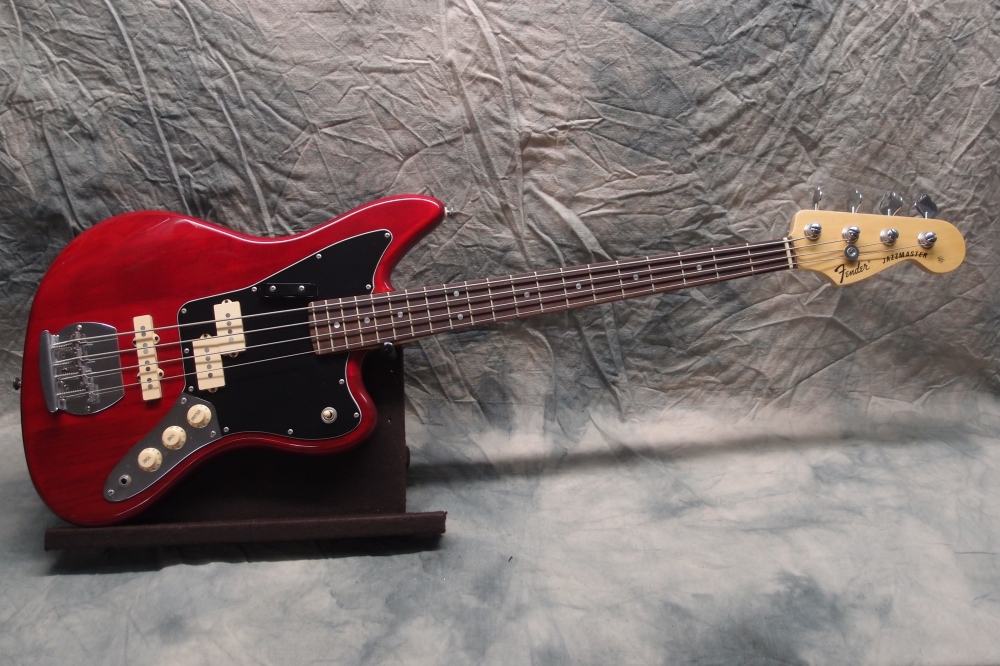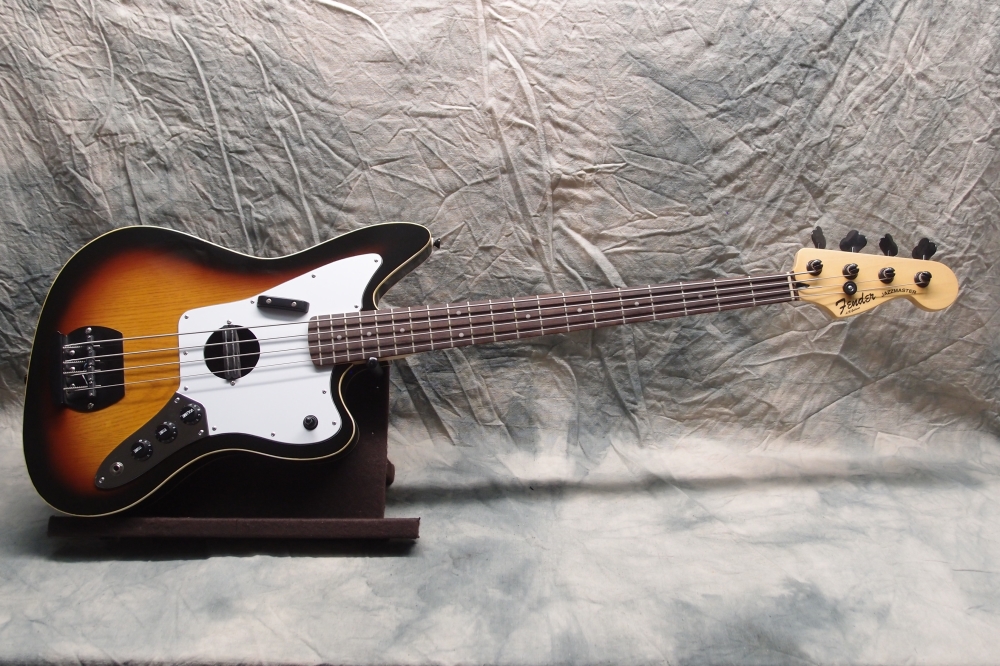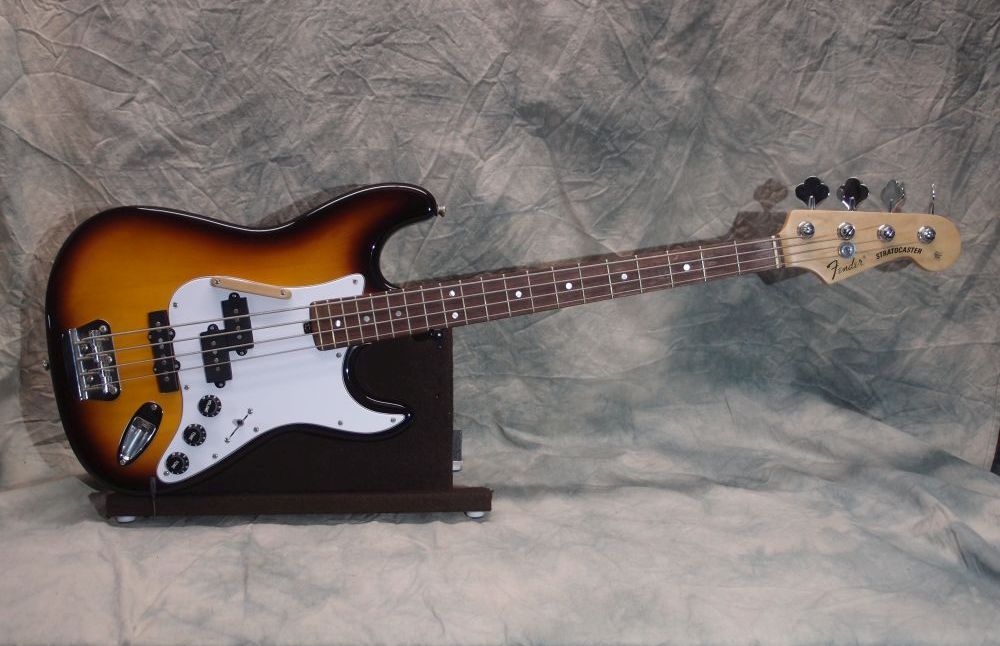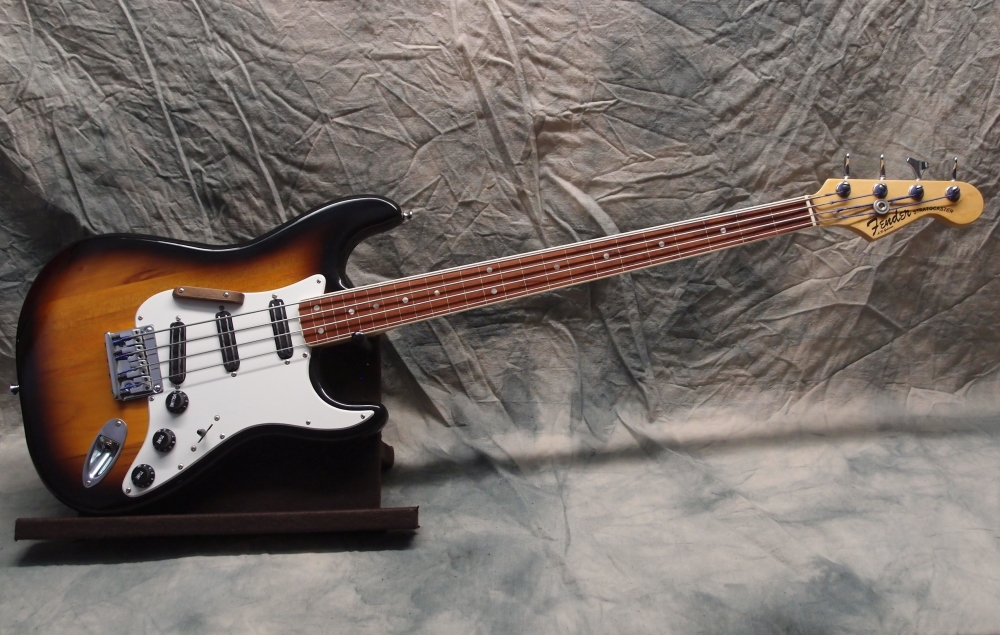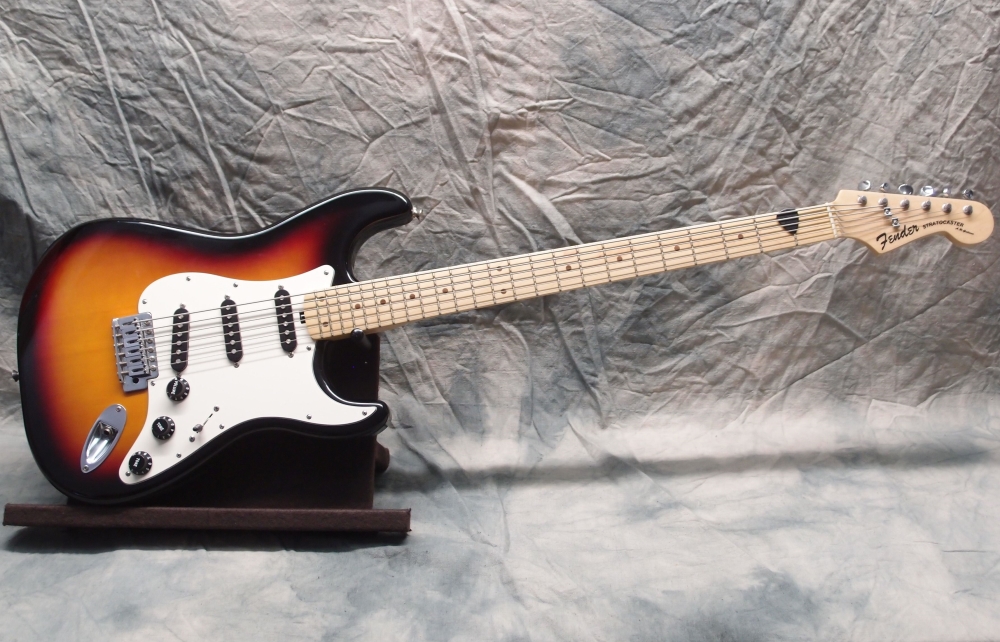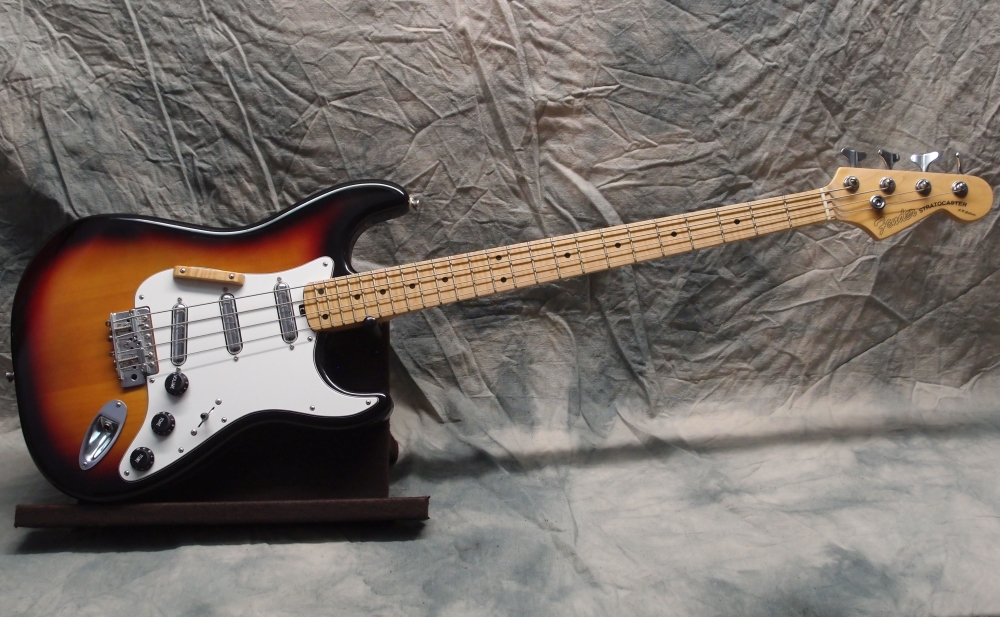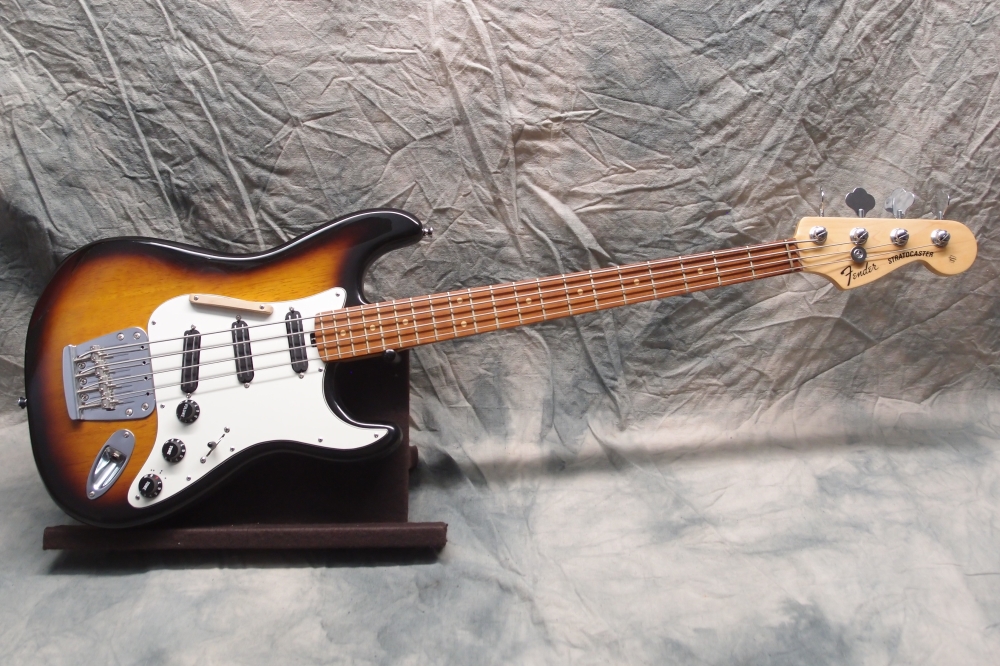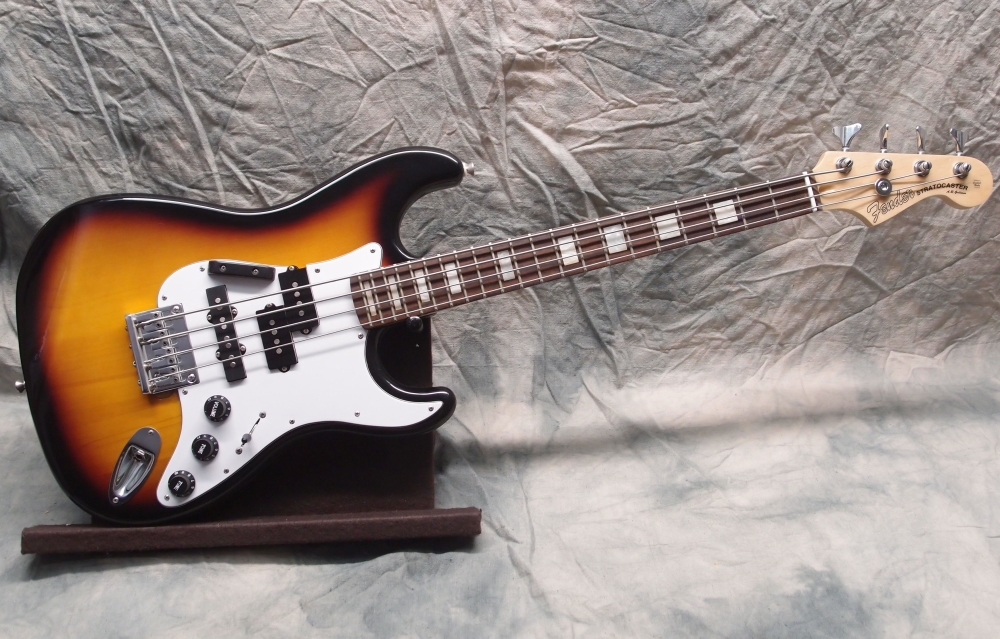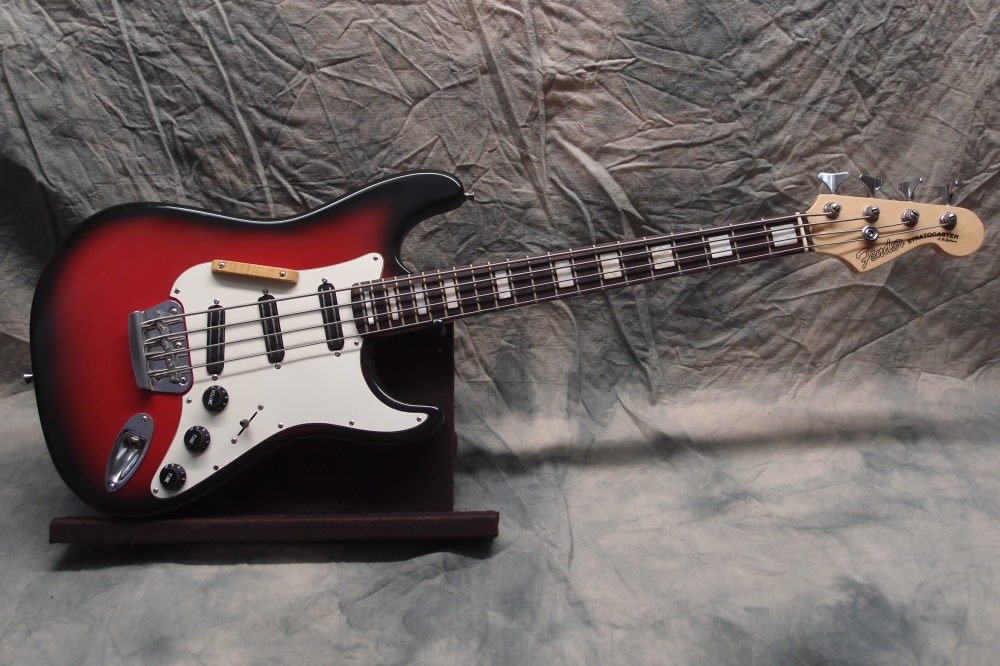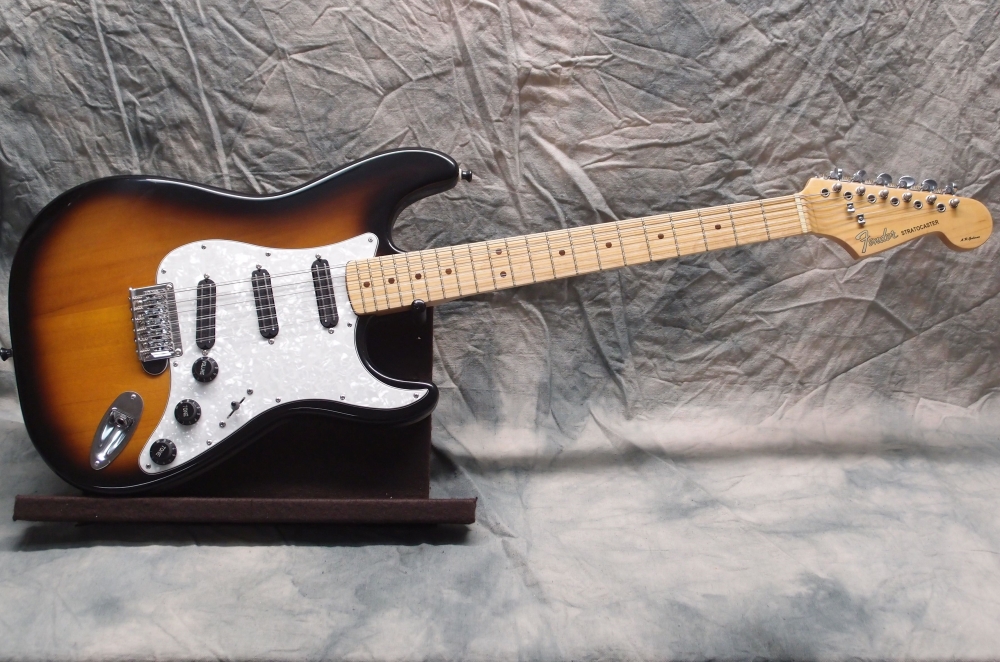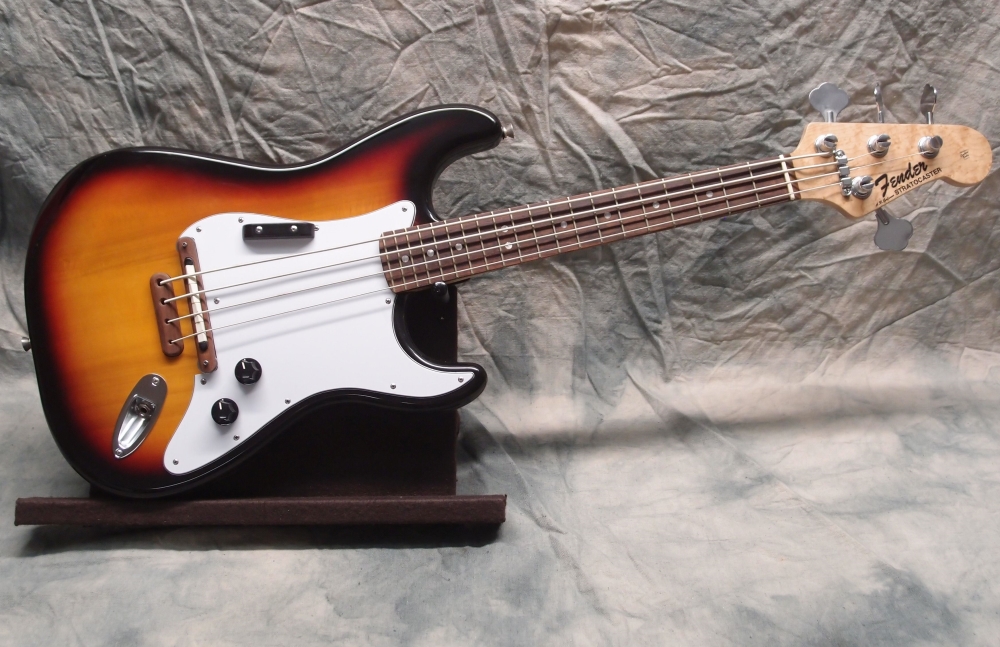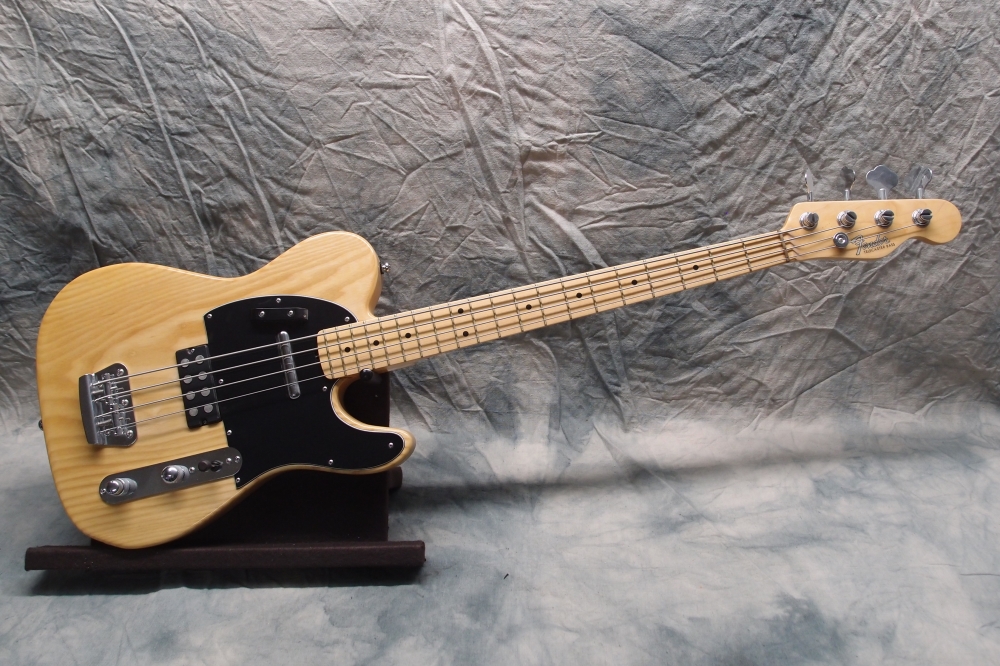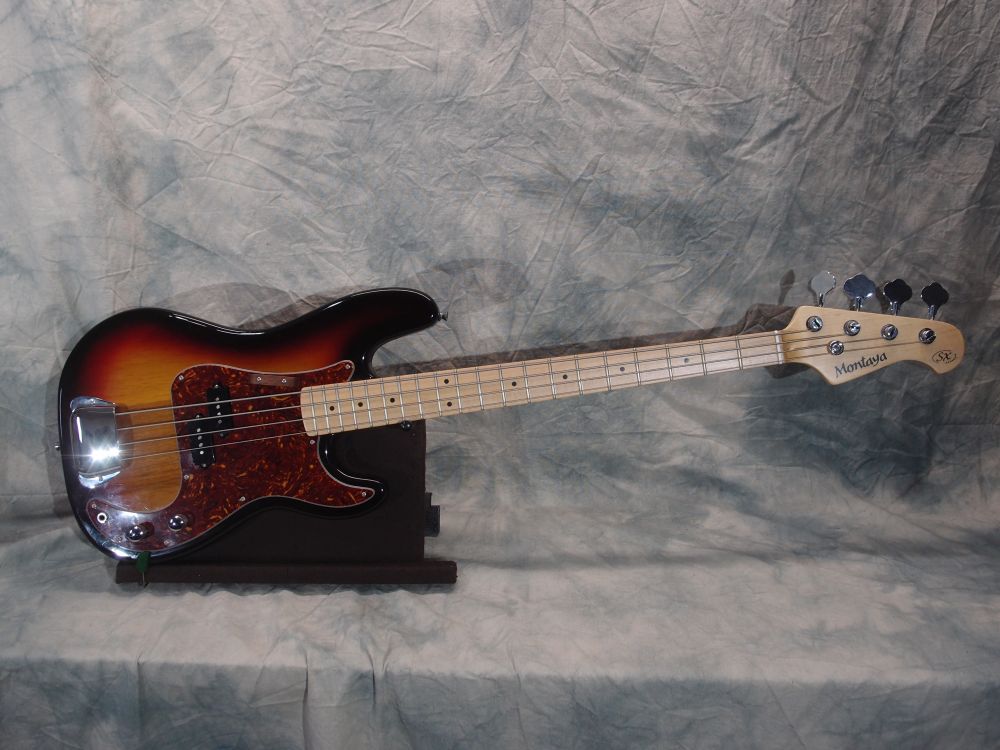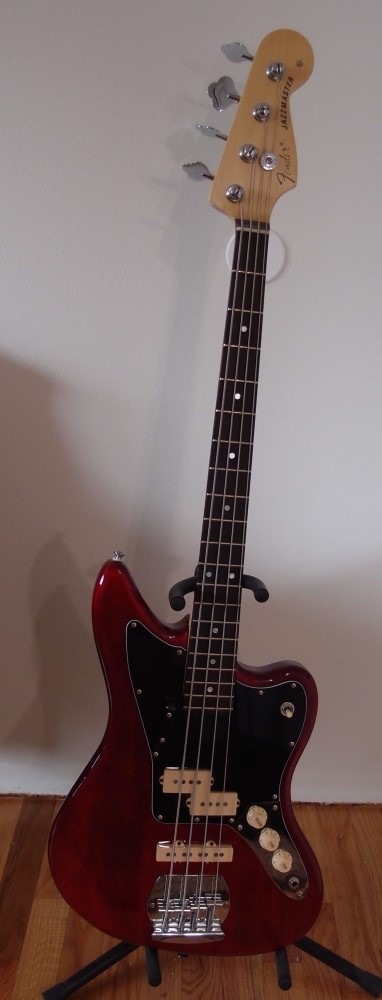Stratocaster Micro Bass 1 (2/3)
The pico bass is largely complete. It has a 25.5" Strat neck, set up for four bass tuners, with a bass bridge and nut. It still needs a thumbrest, which I'll make from a piece of maple or walnut scrap when I get back in the shop. Total cost: about $225.
The neck is from Eden, and is surprisingly nice for about $65. I cut the paddle headstock as long as possible, but is is still short enough to necessitate the small 'sealed' bass tuners. I printed a series of decals on laser decal stock, using the freely available 'Fender' font, and decided the plain black outline looked the best. I even signed the headstock this time, so Fender will know exactly who to sue. The nut is Precision width, which is a prefect fit on the Strat neck. Since it is a bought neck, I decided to go for the block inlays, just for something different.
The body is a Squier Bullet that I confiscated from another project when I decided to shelve the hardtail body that I had intended to use. This was in part due to the fact that I found a nice type of bridge with the narrow 52.5 mm spacing I needed, that was a much more natural fit over the tremolo hole than the trapezoidal Bronco bridge that I had originally intended. I blocked the tremolo hole with a piece of pine to have something to screw to, and the bridge covers almost everything. I made just a token effort to fix up the remaining hole that is still visible. The bridge mounting is as solid as if it was a hardtail, with just a tiny scar visible. The pickguard is modified slightly to fit the bass bridge.
One of the reasons the Strat design is so easy to modify like this is that the pickguard spans the entire space from the neck to the bridge. You can do anything you want to the body neck, and pickups, and make it all neat with a custom pickguard. The tremolo hole is fairly easy to deal with. The stock dual tone control on the Strat is kind of dumb, but it is a boon for modders - two controls you can do anything you want with.
For stringing, there are several choices.
For a piccolo bass, my first go was to just use the bottom four strings from an old baritone set I had. That ended up over-tensioned, with a bad feel and tone, very shrill. So I scrapped the baritone 0.068" E string, moved the next two down, and got two singles from GC, so the final set is 0.056" 0.044" 0.032" 0.024" EADG, all wound *. That sounds and plays much better, with much more bottom end. This string set is similar in weight to many acoustic sets. I set the action a little higher than would be normal for a guitar, and dialed a little extra relief into the neck, because this thing is after all going to get thumped like a bass.
( * For comparison, a D'Addario standard piccolo set is 0.052" 0.042" 0.032" 0.020" EADG, long scale. )
The neck pickup in series mode has the best bass response, other pickups and settings become more and more guitar-like, approximating the rounded tone of a jazz box with the wound G string. In fact, that suggests yet another project to me, something completely new and radical: a 6 string piccolo bass. At any rate, all this was motivated by playing along with Stanley Clarke's 'School Days' and getting frustrated every time he went off the end of the fretboard. Well, eat your heart out now Stanley, I may never play like you, or even close, but now I have more frets !!!
In truth, a four-string guitar that plays like a bass is interesting, but of marginal usefulness, and I would never have done it unless it could do more than that, and it can. The other stringing option is to use the bottom four strings from a 5-string set: 0.135" 0.105" 0.085" 0.070" tuned EADG as a real bass. For this purpose I got an "open-package" set cheap, which I will have to shorten to fit the 25.5" scale. I haven't really looked into how to do this yet, but I imagine soldering the winding to the core at a suitable spot and then removing the excess should work. In this case, I take a string set that tunes BEAD and shorten it to tune EADG, equivalent to applying a capo at the 5th fret, for an equivalent scale length of 25.5".
When I get around to doing that, I'll post the results. So that makes Strat bass #4, and number 5 is on the way, a Bass VI.
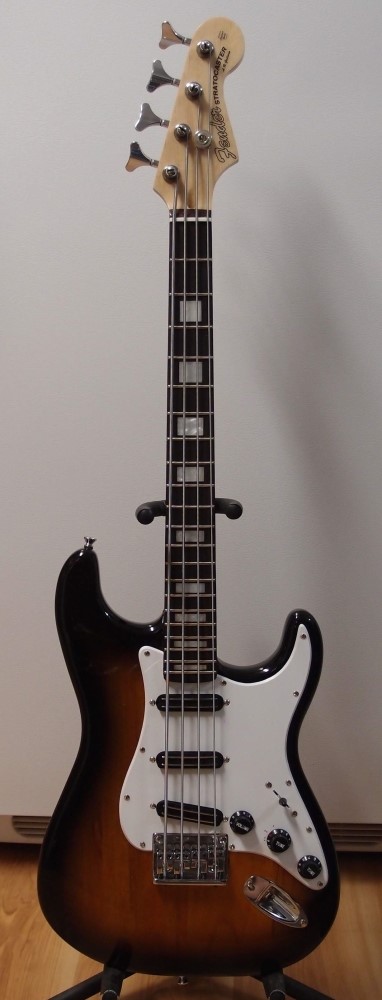
Here is the piccolo again, now converted to a 'pico'. The difference is the strings - the guitar strings are off and bass strings are on. The strings are 0.135" 0.105" 0.085" 0.070" EADG from a long-scale 5-string set. Looking at the extra 0.050" string, a 5-string pico with a high-C comes to mind, but it wouldn't work with a stock guitar neck and body.
Shortening the strings was fairly easy. I clipped them to the right length, and then unwound the outer layer until it was just clear of the tuner post. Only the two heaviest ones needed to be unwound, the two lighter ones went on well enough unchanged. I pinched the strings as tightly as I could in one hand and unwound about half an inch at a time with the other, trying not to let any twisting go up the length.
My soldering idea did not work. Turns out ( I think ) the nickel coating on the strings actually repels solder, no matter what you try to do. At any rate, I didn't try very hard, it was clear that even with a very hot butane torch it wasn't going to work. So instead I bound up the coils with Crazy Glue. Nice runny Crazy Glue ran right into all the tiny crevices and I soon had a solid plastic end cap about an inch long holding the cut windings in place. Note that all of this is taking place between the tuner post and the nut, so the playing part of the string is unaffected. Zoom in on the photo to see it. I did some research afterwards, and nickel is known to be difficult ( but not impossible ) to solder.
Next came intonation. Even the fattest string fit through the bridge hole, so I didn't have to modify that. But this bridge has very little intonation adjustment, and I had installed it for much lighter guitar strings. As you can see, the saddles are pretty much back against the stops, but it is just enough. Another note on this cheap Chinese bridge is that the adjustment screws are too long and bottom-out inside the saddles. I had to shorten them all, otherwise it would have less than 1/4" of adjustment range. In the end, it worked out ok and looks pretty good, and I will probably use these on future projects that require narrow spacing ( 17.5mm ) since the only alternatives are the crude 2-saddle Bronco bridge, and the through-body Mustang bridge, which is both pricy and bothersome to install. Although, in the photo you can see that a 2-saddle Bronco bridge would actually work just fine in this case.
The neck took on a much more pronounced bow with the bass strings, and the truss rod needs to be put to work. The nut slots are too narrow, so the strings are just sitting on top, and I don't want to cut them, as this is just a proof of concept, I think I will go back to the piccolo strings in a few days. I didn't even bother adjusting the saddle or pickup heights. So the action is high and it plays like hell, and I am not going to mess with the setup. Even so, it doesn't play too bad. The short scale makes the strings feel extra tight, a lighter set might work better.
With three pickups, 15 combinations, and a dual-action tone control, the tone is whatever you want it to be. Still, I can't help but feel that something is missing, that it would be better to assemble a dedicated pico bass with bass pickups which would do it justice. The guitar pickups on this model are much more suited to the piccolo setup. Playing feel is certainly different, not bad, but different, which I attribute to the heavier strings. 5-string players would be right at home on these strings, but I am not used to them. The very short scale also takes some getting used to, but once your left hand reprograms itself, even the trickiest fingerings become easy, and the awkward reaches of a long scale bass are not just reduced, but eliminated.
If Leo Fender had not been so set on matching the scale of a double bass, he might easily have converted the Telecaster into a bass like this, and the long-scale bass might never have happened. But then any weakling guitarist could play bass, and the mighty bass man of today would never have evolved. So just as well.
Update on the Piccolo Bass
I wasn't really happy with the piccolo bass - the sound was just too guitar-like. The different pickup modes are neat and all that, but the only one that has much low end is series coils. The flatwound strings mellowed it out a lot, but it still needed something. I want something that sounds like you're playing high up on a bass, not low on a guitar. So I decided to give it a boost, and install active electronics.
Then I remembered that I have a couple of Jaguar control setups in the junk box. These consist of a normal volume and tone control, with a powered bass boost control. I found the boost to be excessive on a normal bass, and replaced the whole chain on both of my Jazzmasters with much better electronics. But that same heavy boost is perfect on the piccolo. In fact, I installed the knob so 0 is full boost, and you back it down from there.
I hardwired all the pickups with series coils, as humbuckers are usually wired, and removed the big mode switch. No sense having coil tap when what you are really after is low end. I then removed the bass/treble control and replaced it with the regular bass tone control that was hanging off the bass booster. The controls are now volume, bass boost, treble cut, with the bass boost default position full. And of course, I had to install a battery box on the back.
Suddenly, it is a bass, especially on the neck pickup. Now you can make so much low end that you can easily forget that you are playing one octave up. You can even make mud with the boost up and the tone backed off all the way. You can also kill the boost and get a fairly guitarish sound, especially from the bridge pickup. This is the instrument I was trying to build. For every kid in a garage band who got stuck playing bass on his guitar, this one's for you.
The one thing it still needs is my usual dead battery bypass switch, because I ran out of them. When I get one, it will be back into the solder, but for now I am very pleased with the results, and it cost next to nothing - just parts from the junk box, and an inexpensive battery box.





